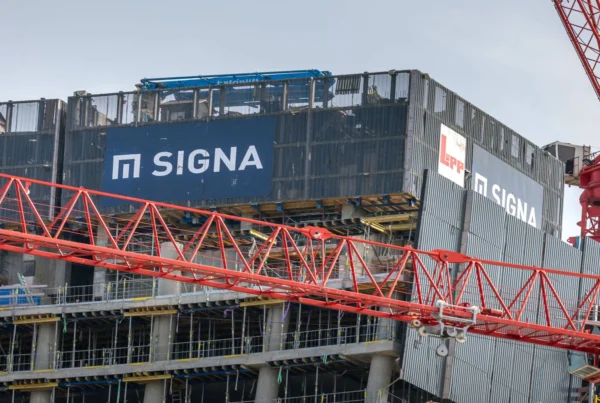Neurosymbolic AI is a hot topic in AI research that combats hallucinations and other imprecisions by combining machine learning with exact methods based on logic, rules and facts. One area for application of Neurosymbolic AI is air traffic management. After the horrific string of plane accidents in the US, President Donald J. Trump has declared his goal to completely renew US air traffic control. Will Neurosymbolic AI play a role in this new system?
Alexander Gebhard Beiser
16 April 2025
With AI making ever-new headlines about recent breakthroughs, including receiving the 2024 Nobel Prize in Physics for foundational discoveries in machine learning with artificial neural networks and playing a central role in the Chemistry Nobel prize, its hype has reached unprecedented heights. Most of this hype can be attributed to the techniques underlying machine learning, neural networks, deep learning, big data and Large Language Models (LLMs). Although these approaches achieve excellent results on tasks such as image or speech recognition, their major drawback is that they are not exact. For LLMs such as ChatGPT, this relates to the LLM hallucination problem, where they present information as facts that are, in fact, false. These problems lead to the distrust of AI systems and further complicate their application in safety-critical systems and industries, such as air traffic management.
Symbolic and subsymbolic AI are the two main scholarly branches of AI research. One of the best ways to grasp them is to relate them to Kahneman’s book: “Thinking Fast and Slow” (D. Kahneman, 2011).
Thinking Fast, or type 1 thinking, describes how humans make decisions on everyday tasks. Imagine a commuter on their way to work heading down the stairs of a subway station. A train is approaching, and the commuter has to decide whether to run to catch it or wait for the next one. Such a decision must be taken in an instant, as the train will not wait. This type 1 thinking is fast and intuitive, but sometimes erroneous in the sense that not an optimal decision is taken.
Slow thinking or type 2 thinking, on the other hand, is deliberative. It is used to make decisions by weighing options against each other. For example, a tourist plans a holiday trip to Austria. Various options are being considered based on the time of year and the desired experience, the gorgeous landscapes in Tyrol, skiing on the Alpine slopes or exploring the cultural highlights of Vienna. A plan is devised by making a list of the possible destinations and weighing the pros and cons.
This type 2 thinking is slow, deliberate and precise.
How does this relate to AI? The parallels between type 1 thinking and subsymbolic AI, as well as type 2 thinking and symbolic AI are striking: while subsymbolic AI takes approximate decisions based on learned behavior, symbolic AI uses logical reasoning and provably correct methods.
Subsymbolic AI uses data to train neural networks or other statistical learning techniques. Consider the following example: The MNIST dataset contains 70 000 images of handwritten digits in the range of 0 to 9. Given such a digit, the task of a subsymbolic AI method, such as a neural network, is to predict the value of the digit correctly. The neural network learns through repeated trial and error to correctly classify such an image.
Symbolic methods, on the other hand, rely on reasoning and provably correct algorithms. This reasoning is based on precisely defined rules and constraints. Consider the task of an air traffic controller who needs to safely separate aircraft from each other while still coming up with an efficient schedule. Methods from symbolic AI can help in designing such a schedule. Take, for example, Answer Set Programming (ASP) – a logic-programming based symbolic AI method. ASP is able to automatically generate a schedule from a set of rules that define the number of aircraft, the structure of the airspace and constraints that have to be considered.
However, subsymbolic and symbolic AI on their own are unable to meet all desired aims for AI. For the handwritten digit example, while subsymbolic AI can recognize single digits to a satisfying standard, it will not be able to use them to perform mathematics reliably. On the other hand, the symbolic approach will have a hard time taking uncertainties into account, such as how weather or human qualifications affect air safety.
Neurosymbolic AI aims to achieve a symbiosis between subsymbolic and symbolic AI. The hope is that neurosymbolic AI enables subsymbolic systems to reason while enabling symbolic systems to handle uncertainties. In other words, to make them closer to a human’s decision-making process.
Neurosymbolic AI has enormous potential. Forbes recently published a list of 20 practical applications of neurosymbolic AI, with examples ranging from automated legal document analysis to improving aircraft safety. Improving aircraft safety is also in line with the European Union Aviation Safety Agency’s (EASA’s) artificial intelligence roadmap 2.0, in which neurosymbolic AI is an integral part of its plan to integrate AI into aviation.
On the scholarly side in Austria, the Center for Artificial Intelligence and Machine Learning (CAIML, https://caiml.org/, accessed 29 March 2025) and in the Bilateral AI (BilAI, https://www.bilateral-ai.net/home, accessed 29 March 2025) cluster of excellence are on the forefront of neurosymbolic AI research.
Picture: Silhouette of an airplane against the sunset. generated by ai







